
Xlendi
Encyclopedia
Xlendi is a village in Malta
situated in the south west of the island of Gozo
. The name is probably derived from the word "xelandion", a type of Byzantine
vessel which may have anchored in the port. It is surrounded by the villages of Munxar
, Fontana
and Kerċem
. Xlendi falls under Munxar for administrative purposes, though it does have its own coat of arms and motto. From March 2010, Xlendi will be having its own 5-person "mini council", which will be responsible for the main activities of the area.
Also Tombs dating Punic-Byzantine times were found in Xlendi, some at St Simon Point (under St Simon Street) and some others in Xlendi Valley. Romans used to port in Xlendi as it has features that can protect from the wind for its cliffs around the bay. In the middle of the bay there is a reef that many ships shipwrecked against it. These ships left a large number of Roman amphora on the sea bed in the mouth of the bay.
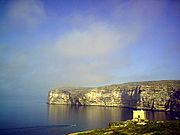
The tower guarding the mouth of the bay was built by the Grandmaster Lascaris in the 1650 exactly on 29 June. This was built so no pirates or Turks could disembark from this bay. This tower is still standing. It has, until recently been abandoned with great damage occurring to the outer walls of the Tower. Responsibility for the tower was passed in 2010 to the Local Council and Din L'Art Helwa. It is anticipated that restoration work will be commenced during 2011. The Tower was quite important for the British Army in Malta as it was the only tower in the southwest of the island. It was entitled Tower B (secondly in place) to show its importance.
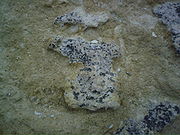 It is strange that in Xlendi in the middle 17th century had a total of 4 chapels. These were: St Simon Chapel (St Simon Point) which also had a cemetery and when profaned, the bishop ordered that a stone cross should be carved in the rocks; St Domenica which was an underground chapel located roughly on the cliffs over the valley of Xlendi on the side of Munxar and was difficult to reach it so it was profaned soon after it was established; St Catherine was established over Xlendi on the cliffs on the side of the village of Kercem. It was built over a cliff which bears the same name. It is said that there was a small community in the areas of this chapel; 'Vizitazzjoni ta' Forn il-Gir' was not much visited by people. It was established between Munxar and Xlendi but very little is known about it. All of these chapels were profaned between the 1650s and the 1680s.
It is strange that in Xlendi in the middle 17th century had a total of 4 chapels. These were: St Simon Chapel (St Simon Point) which also had a cemetery and when profaned, the bishop ordered that a stone cross should be carved in the rocks; St Domenica which was an underground chapel located roughly on the cliffs over the valley of Xlendi on the side of Munxar and was difficult to reach it so it was profaned soon after it was established; St Catherine was established over Xlendi on the cliffs on the side of the village of Kercem. It was built over a cliff which bears the same name. It is said that there was a small community in the areas of this chapel; 'Vizitazzjoni ta' Forn il-Gir' was not much visited by people. It was established between Munxar and Xlendi but very little is known about it. All of these chapels were profaned between the 1650s and the 1680s.
The current chapel in Xlendi is dedicated to Our Lady of Mount Carmel
. The front section of the building dates back to 1868; in 1969 it was enlarged at the rear. The church was dedicated in 1974. Every year, on the first Sunday of September, a feast dedicated to the patron saint, is held. In the Afternoon, water games are held at the bay with the traditional 'gostra' a greasy pole which the players have the walk on to catch a flag. In the evening a procession with the statue of Our Lady of Mount Carmel is held around Xlendi.
During the years 1955, the Xlendi mill was excavated into the cliffs, situated behind the Mount Carmel church. The excavation was a huge undertaking, which consisted firstly of an entrance tunnel, some 30 meters long, 2.5 meters high and 3 meters wide, leading into a large chamber. This chamber was divided into three floors and housed the storage, grinding and milling equipment. At the rear of the mill is the silo, having a storage capacity of approximately 1,000 tons of wheat, and connected to the milling machinery by mechanical augers. An 80 hp diesel engine and alternator supplied power. Entrances from above can also access the silo. The Mill was built when the Cold War was escalating when nuclear conflict was possible. This Mill was nuclear safe. But this mill was never used after built.
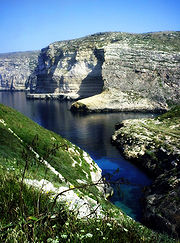 This village has a great topography with quite steep cliffs on the side and a valley on the back which takes rain water from the villages surrounding it (Kerċem, Munxar, Fontana and Victoria
This village has a great topography with quite steep cliffs on the side and a valley on the back which takes rain water from the villages surrounding it (Kerċem, Munxar, Fontana and Victoria
) into the bay.
In the British rule, Xlendi was a bay holding a sandy bay but by time wave, the valley water and human interference now Xlendi holds a few pebbles. The bay is still known for the rocks on the left side of the bay which are good for sunbathing and for diving.
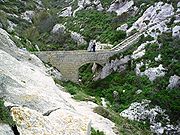 This valley starts from Fontana continuing from the Lunzjata Valley and Wied l-Ghawdxija and ends in the bay into the sea. So Xlendi Valley collects almost all the rain that falls on the adjacent villages of Kerċem, Munxar and Fontana. The rain water goes through Xlendi and this is quite a problem for most citizens living in Xlendi because they are isolated by the fast flowing water. This also causes flooding in the buildings on the main road from where the valley water passes. This valley is one of the very few homes to the Maltese Freshwater Crab
This valley starts from Fontana continuing from the Lunzjata Valley and Wied l-Ghawdxija and ends in the bay into the sea. So Xlendi Valley collects almost all the rain that falls on the adjacent villages of Kerċem, Munxar and Fontana. The rain water goes through Xlendi and this is quite a problem for most citizens living in Xlendi because they are isolated by the fast flowing water. This also causes flooding in the buildings on the main road from where the valley water passes. This valley is one of the very few homes to the Maltese Freshwater Crab
.
Il-Kantra is a valley on the left of the bay just beside the Tower. The name Kantra derives from Alcantara in Spanish-Sicilian. This is because of the entrance of the valley and the valleys' form. From the entrance of this valley, it could be seen as a bow. This valley is home to many types of flora and fauna because not many people go in the valley. The Tower of Xlendi was reached by a bridge built by the Knights of Saint John over the Kantra Valley.
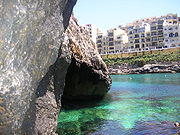
There are many caves, small or large, on the sides of the bay. The main and most known caves are:
Caroline Cave is a cave on the right cliffs of the bay. It was once property of Caroline Cauchi, a rich woman from Victoria. Later she founded the Augustinian Sisters on Gozo and donated almost all of her land, including the cave and other land in Xlendi. The Sisters during summers started to stay at Xlendi. They would go for a swim in this cave which was isolated and could only be reached by stairs. So they would use this cave as their own and would not be see by other people in the bay.
Catherine of Siena
Cave is situated outside the bay on the right side. It is well known for the very clear blue water. In the 17th century people used to live in the areas around the cave and built a church just over the cave. So the cave got its name from the saint to which the church was dedicated.
The not developed area around Xlendi is home from a lot of flora and fauna species some of them rare. One can name the Seagulls, the Maltese Freshwater Crab
and the 'Widnet il-Bahar'. Today Xlendi is one of the most developed areas on the island, a feature that damages the biodiversity in the area.
. Carolina Cauchi was born in Senglea on the 25th December 1824, the only child of the Notary Nicolò Cauchi, from Victoria, Gozo and Theresa née Galea from Senglea, Malta. The family Cauchi was affluent, therefore Carolina was sent off to school to continue her education, in spite of the fact that at the time girls received little education. Carolina learned to write Italian well and she knew Latin as well. Above all she received an optimal Christian upbringing.
The first Dominican community consisting of 9 women was born on the 6th October 1889, feast of Our lady of the Rosary. These women after taking part in the procession returned to the monastery and started to live as contemplative nuns. However until this community was formally recognized and accepted by the Dominican Order in August 1893 the ideal was modified and they started to be known as a community of the Dominican Third Order. Caroline knew how to use the material goods she possessed for the glory of God and the good of humanity. She lived the spirit of poverty after the example of Our Mother Mary and Saint Dominic. At the beginning she frequently visited the Sisters but she never stayed at the monastery. During the summer she would often invite the Sisters for a vacation at her holiday house in Xlendi. She was pleased to see the Congregation growing in number and progressing in the apostolate. In fact she confirmed her former dispositions in favour of the Monastery.
Caroline knew how to use the material goods she possessed for the glory of God and the good of humanity. She lived the spirit of poverty after the example of Our Mother Mary and Saint Dominic. At the beginning she frequently visited the Sisters but she never stayed at the monastery. During the summer she would often invite the Sisters for a vacation at her holiday house in Xlendi. She was pleased to see the Congregation growing in number and progressing in the apostolate. In fact she confirmed her former dispositions in favour of the Monastery.
The Father of Carolina, Notary Nicolo, was given some land, from the Our Lady of Mount Carmel Monks of Mdina, so that a chapel dedicated to Our Lady of Mount Carmel to be built.
Constance Strickland made great restoration of the Xlendi Tower in two years starting in ther year 1956, because the Tower was almost falling. But soon after the restouration in 1979 the tower fell again in bad condition.
Tony Portelli was famous for his life in Xlendi. He had a small shop where he sold some soft drinks, biscuits and food to people in Xlendi. Tony was also famous for his rabbit stew and many Maltese used to go to eat at his house. He also had some goats and used to go at his fields on the right cliffs of Gozo.
Gianni was the local police for most of his life. He used to stay on guard in large storms because of the strong water currents coming from the valley. Gianni was well known for his seriousness about his work. He used to help the Rector who lived out of the village and used to open the chapel early in the morning and ring the bells.
This family owned a large area of fields in which they worked all day. They had some other people helping them because they had a lot of work to do. They also had about 6 cows which was a rarity in these islands in those periods. Their crops and milk were sold to the citizens and the extra was sold at Kercem.
Malta
Malta , officially known as the Republic of Malta , is a Southern European country consisting of an archipelago situated in the centre of the Mediterranean, south of Sicily, east of Tunisia and north of Libya, with Gibraltar to the west and Alexandria to the east.Malta covers just over in...
situated in the south west of the island of Gozo
Gozo
Gozo is a small island of the Maltese archipelago in the Mediterranean Sea. The island is part of the Southern European country of Malta; after the island of Malta itself, it is the second-largest island in the archipelago...
. The name is probably derived from the word "xelandion", a type of Byzantine
Byzantine Empire
The Byzantine Empire was the Eastern Roman Empire during the periods of Late Antiquity and the Middle Ages, centred on the capital of Constantinople. Known simply as the Roman Empire or Romania to its inhabitants and neighbours, the Empire was the direct continuation of the Ancient Roman State...
vessel which may have anchored in the port. It is surrounded by the villages of Munxar
Munxar
Munxar or Il-Munxar is a village which lies on the southern side of Gozo Island, Malta, close to the village of Sannat. It has its own local village council...
, Fontana
Fontana, Gozo
Il-Fontana is a village on Gozo Island, Malta, with a population of 846 people .Fontana originated from the suburb of Victoria on the Rabat-Xlendi road. Its local name is "It-Triq tal-Ghajn", , and it took its name from a spring at the bottom of the road leading to Xlendi, known locally as...
and Kerċem
Kercem
Ta' Kerċem is a village on Gozo Island, Malta, with a population of 1,654 people .The village of Ta' Kerċem lies close by to the south-west of Victoria, spread between the picturesque Lunzjata Valley, the green hills of Tal-Mixta, Għar Ilma and Ta' Dbieġi, and stretching up to the Pond of Għadira...
. Xlendi falls under Munxar for administrative purposes, though it does have its own coat of arms and motto. From March 2010, Xlendi will be having its own 5-person "mini council", which will be responsible for the main activities of the area.
Historical places
- Punic Tombs
Also Tombs dating Punic-Byzantine times were found in Xlendi, some at St Simon Point (under St Simon Street) and some others in Xlendi Valley. Romans used to port in Xlendi as it has features that can protect from the wind for its cliffs around the bay. In the middle of the bay there is a reef that many ships shipwrecked against it. These ships left a large number of Roman amphora on the sea bed in the mouth of the bay.

- Tower
The tower guarding the mouth of the bay was built by the Grandmaster Lascaris in the 1650 exactly on 29 June. This was built so no pirates or Turks could disembark from this bay. This tower is still standing. It has, until recently been abandoned with great damage occurring to the outer walls of the Tower. Responsibility for the tower was passed in 2010 to the Local Council and Din L'Art Helwa. It is anticipated that restoration work will be commenced during 2011. The Tower was quite important for the British Army in Malta as it was the only tower in the southwest of the island. It was entitled Tower B (secondly in place) to show its importance.
- Chapels

The current chapel in Xlendi is dedicated to Our Lady of Mount Carmel
Our Lady of Mount Carmel
Our Lady of Mount Carmel is the title given to the Blessed Virgin Mary in her role as patroness of the Carmelite Order. The first Carmelites were Christian hermits living on Mount Carmel in the Holy Land during the late 12th and early to mid 13th centuries...
. The front section of the building dates back to 1868; in 1969 it was enlarged at the rear. The church was dedicated in 1974. Every year, on the first Sunday of September, a feast dedicated to the patron saint, is held. In the Afternoon, water games are held at the bay with the traditional 'gostra' a greasy pole which the players have the walk on to catch a flag. In the evening a procession with the statue of Our Lady of Mount Carmel is held around Xlendi.
- Underground Emergency Mill
During the years 1955, the Xlendi mill was excavated into the cliffs, situated behind the Mount Carmel church. The excavation was a huge undertaking, which consisted firstly of an entrance tunnel, some 30 meters long, 2.5 meters high and 3 meters wide, leading into a large chamber. This chamber was divided into three floors and housed the storage, grinding and milling equipment. At the rear of the mill is the silo, having a storage capacity of approximately 1,000 tons of wheat, and connected to the milling machinery by mechanical augers. An 80 hp diesel engine and alternator supplied power. Entrances from above can also access the silo. The Mill was built when the Cold War was escalating when nuclear conflict was possible. This Mill was nuclear safe. But this mill was never used after built.
Topography

Victoria, Malta
Victoria or Città Victoria is the capital of Gozo, an island of the Maltese archipelago in the Mediterranean Sea. The town has a total population of 6,414 , and by population is the largest locality in Gozo....
) into the bay.
- Xlendi Bay
In the British rule, Xlendi was a bay holding a sandy bay but by time wave, the valley water and human interference now Xlendi holds a few pebbles. The bay is still known for the rocks on the left side of the bay which are good for sunbathing and for diving.
- Xlendi Valley

Maltese freshwater crab
The Maltese freshwater crab is a subspecies of freshwater crab, endemic to certain areas within the Maltese Islands. It is very rare and its numbers have been decreasing in recent years.-General features:...
.
- Kantra
Il-Kantra is a valley on the left of the bay just beside the Tower. The name Kantra derives from Alcantara in Spanish-Sicilian. This is because of the entrance of the valley and the valleys' form. From the entrance of this valley, it could be seen as a bow. This valley is home to many types of flora and fauna because not many people go in the valley. The Tower of Xlendi was reached by a bridge built by the Knights of Saint John over the Kantra Valley.

- Caves
There are many caves, small or large, on the sides of the bay. The main and most known caves are:
Caroline Cave is a cave on the right cliffs of the bay. It was once property of Caroline Cauchi, a rich woman from Victoria. Later she founded the Augustinian Sisters on Gozo and donated almost all of her land, including the cave and other land in Xlendi. The Sisters during summers started to stay at Xlendi. They would go for a swim in this cave which was isolated and could only be reached by stairs. So they would use this cave as their own and would not be see by other people in the bay.
Catherine of Siena
Catherine of Siena
Saint Catherine of Siena, T.O.S.D, was a tertiary of the Dominican Order, and a Scholastic philosopher and theologian. She also worked to bring the papacy of Gregory XI back to Rome from its displacement in France, and to establish peace among the Italian city-states. She was proclaimed a Doctor...
Cave is situated outside the bay on the right side. It is well known for the very clear blue water. In the 17th century people used to live in the areas around the cave and built a church just over the cave. So the cave got its name from the saint to which the church was dedicated.
- Nature
The not developed area around Xlendi is home from a lot of flora and fauna species some of them rare. One can name the Seagulls, the Maltese Freshwater Crab
Maltese freshwater crab
The Maltese freshwater crab is a subspecies of freshwater crab, endemic to certain areas within the Maltese Islands. It is very rare and its numbers have been decreasing in recent years.-General features:...
and the 'Widnet il-Bahar'. Today Xlendi is one of the most developed areas on the island, a feature that damages the biodiversity in the area.
Important or well-known people in Xlendi's history
- Caroline Cauchi
. Carolina Cauchi was born in Senglea on the 25th December 1824, the only child of the Notary Nicolò Cauchi, from Victoria, Gozo and Theresa née Galea from Senglea, Malta. The family Cauchi was affluent, therefore Carolina was sent off to school to continue her education, in spite of the fact that at the time girls received little education. Carolina learned to write Italian well and she knew Latin as well. Above all she received an optimal Christian upbringing.
The first Dominican community consisting of 9 women was born on the 6th October 1889, feast of Our lady of the Rosary. These women after taking part in the procession returned to the monastery and started to live as contemplative nuns. However until this community was formally recognized and accepted by the Dominican Order in August 1893 the ideal was modified and they started to be known as a community of the Dominican Third Order.

The Father of Carolina, Notary Nicolo, was given some land, from the Our Lady of Mount Carmel Monks of Mdina, so that a chapel dedicated to Our Lady of Mount Carmel to be built.
- Constance Strickland
Constance Strickland made great restoration of the Xlendi Tower in two years starting in ther year 1956, because the Tower was almost falling. But soon after the restouration in 1979 the tower fell again in bad condition.
- Tony Portelli - Ta' Talija
Tony Portelli was famous for his life in Xlendi. He had a small shop where he sold some soft drinks, biscuits and food to people in Xlendi. Tony was also famous for his rabbit stew and many Maltese used to go to eat at his house. He also had some goats and used to go at his fields on the right cliffs of Gozo.
- Gianni ta' Berta
Gianni was the local police for most of his life. He used to stay on guard in large storms because of the strong water currents coming from the valley. Gianni was well known for his seriousness about his work. He used to help the Rector who lived out of the village and used to open the chapel early in the morning and ring the bells.
- Ta' Gori Family
This family owned a large area of fields in which they worked all day. They had some other people helping them because they had a lot of work to do. They also had about 6 cows which was a rarity in these islands in those periods. Their crops and milk were sold to the citizens and the extra was sold at Kercem.

- Rectors
- Rafel Cassar 1872-1904
- Ganni Marija Attard 1905-1931
- Indri Buhagiar 1931-1939
- Karm Grech 1939-1941
- Guzeppi Grech 1941-1944
- Anton Grech Sciluna 1944-1960
- Guzeppi Curmi 1960-1984
- John Bosco Cremona 1984-
Xlendi roads
- Pjazza l-Anfori (Anfori Square)
- Triq il-Qsajjam
- Triq ir-Rabat (Victoria Road)
- Triq Ras il-Bajjada (Ras il-Bajjada Road)
- Triq San Xmun (St Simon Road)
- Triq il-Bizantini (Byzantine Street)
- Triq ir-Rumani (Romans Street)
- Triq il-Punici (Punic Street)
- Triq it-Torri (Tower Street)
- Triq il-Kantra (Kantra Street)
- Triq il-Kavallieri (Knights Street)
- Triq iz-Zirzieb (Slippery Street)
- Triq l-Ghar ta' Karolina (Caroline Cave Street)
- Triq Sienja (Sienja Street)
- Triq ir-Rancis (Rancis (a flower) Street)
- Triq Qroll (Coral Street)
- Triq tal-Karmnu (Our Lady of Mount Carmel Street)
- Triq ix-Xlendi (Xlendi Street)
- Triq is-Sajjieda (Fishers' Street)
- Triq Sant' Indrija (Saint Andrew Street)
External links
- an info website for Xlendi updated frequently.

